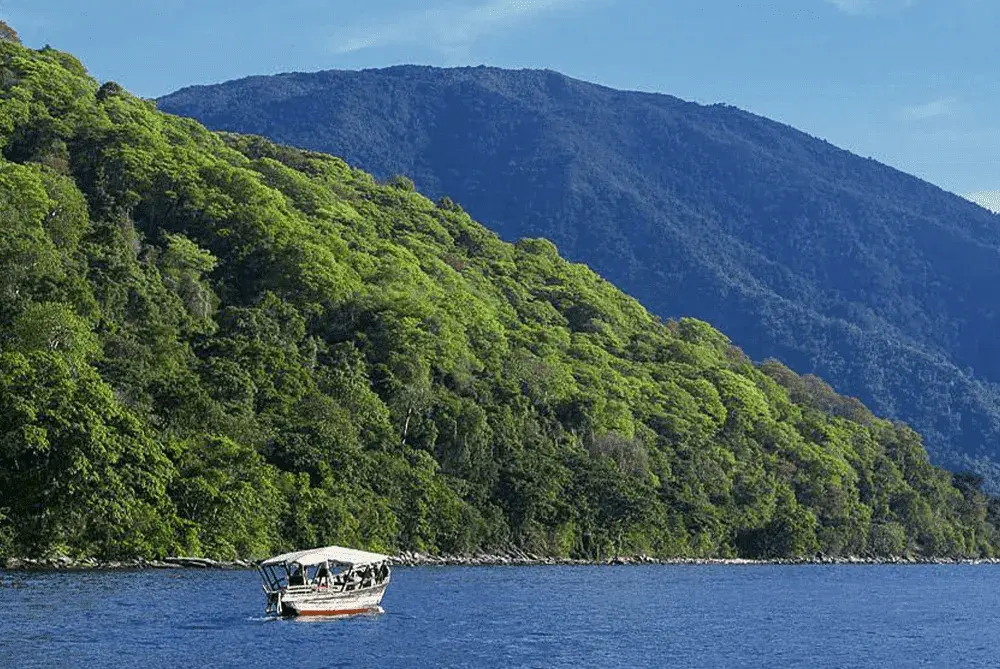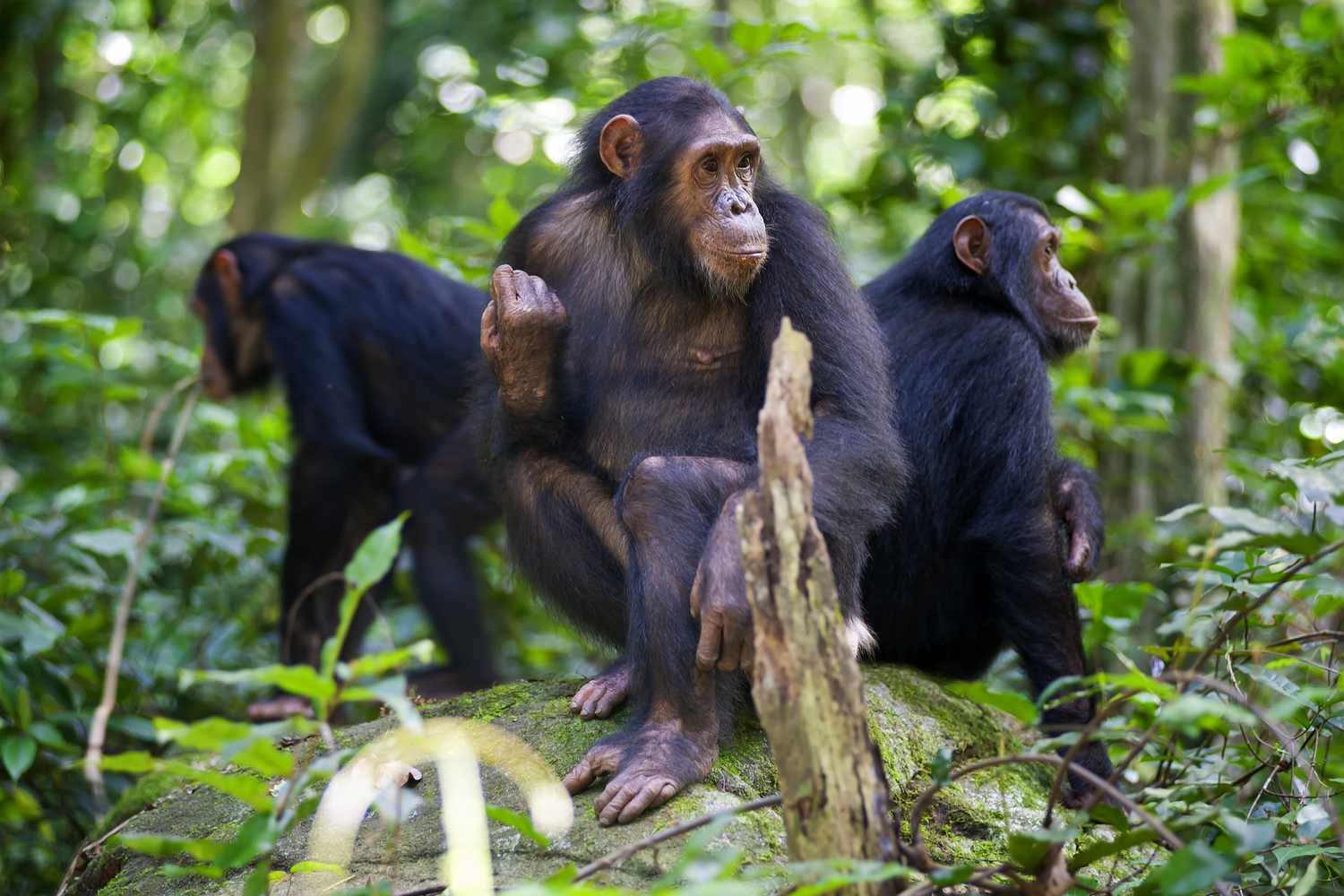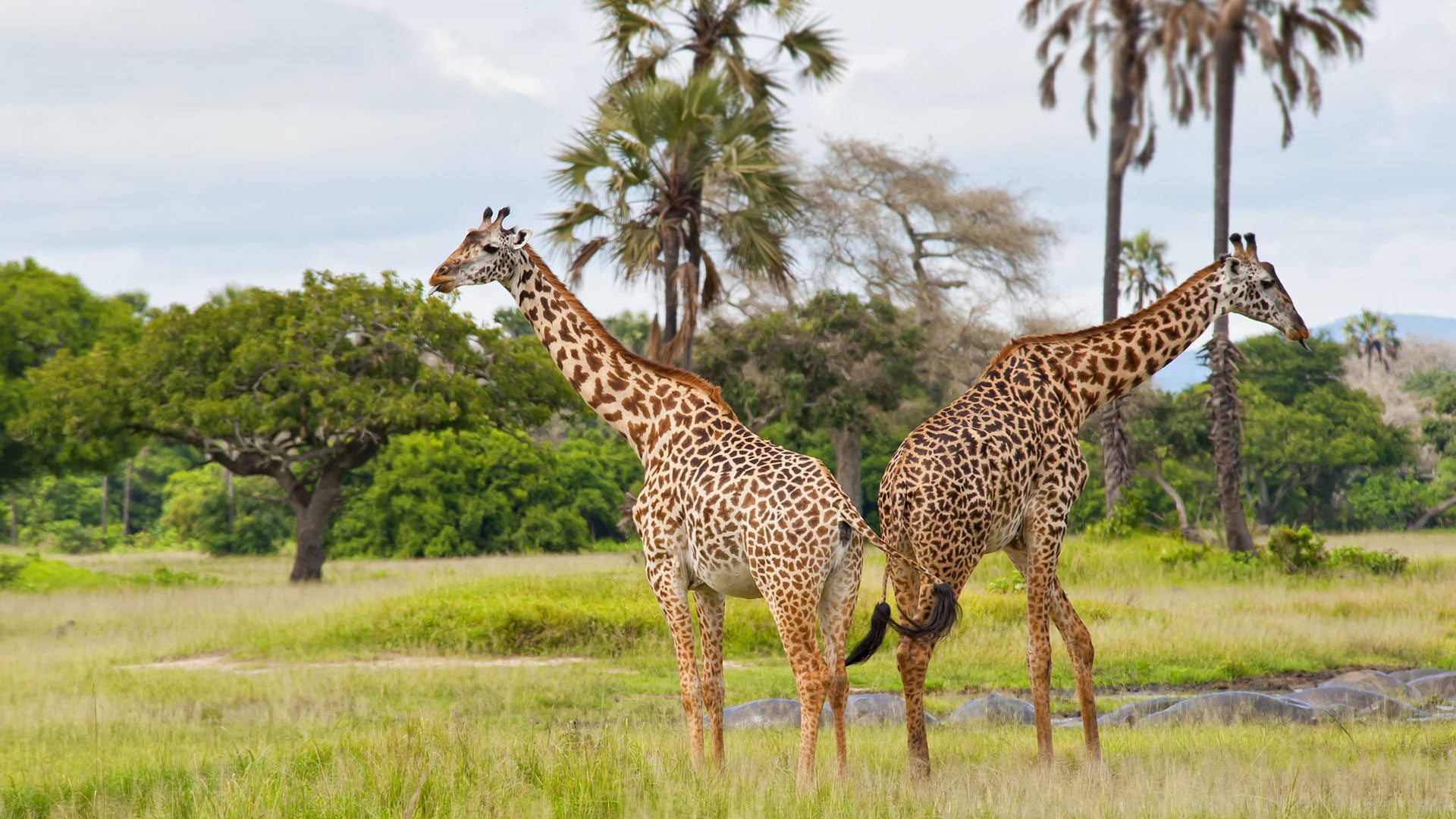Explore Tanzania and experience this great country to its fullest extent. Lounge on the beaches of Lake Victoria or Nyasa Lake, then gaze across the Indian Ocean towards the mystical, ever-exotic island of Zanzibar island of Zanzibar . Safari across the rolling savannahs of the great Serengeti National Park and feast your eyes upon the magnificent Mount Kilimanjaro – the highest, permanently snow-capped mountain in Africa .

Mahale Mountains National Park lies 120 km south of Kigoma town, on a peninsula in Lake Tanganyika on the western border of Tanzania. The park has an area of 1613 sq km and is dominated by the Mahale Mountains Chain running from north-west to south-east across the middle of the park, the highest peak, Mount Nkungwe, rising 2,462 meters above sea level. Its western boundary protects not only 63 kms of lakeshore but also the adjacent 1.6 km-wide strip of coastal waters. The park vegetation is mainly Miombo woodland with narrow strips of riverine forests, some rain forest and savannah which provide habitat to a variety of animal species. About 82 species of mammals have been recorded in Mahale, a remote road-free park accessible only by boat or light aircraft. Mahale Mountains is home to some Africa’s last remaining wild chimpanzees, with an estimated population of about 800, found in the rain forests of Mahale. (Only 60 individuals forming what is known as "M group"), habituated to human visitors by a Japanese research project founded in the 1960s. Other rain forest animals including the Angolan colobus monkey and other primates.
With an area of only 56 sq km, Mahale Mountains National Park Gombe National Park Tanzania is Tanzania’s smallest national park, but its famous primate inhabitants and its connection to Jane Goodall has given it worldwide renown. Many of Gombe’s 100-plus chimps are well habituated, and though it can be difficult, sweaty work traversing steep hills and valleys, if you head out early in the morning sightings are nearly guaranteed.
As well as chimp tracking, you can take walks along the lake shore, and go and see Jane’s old chimp-feeding station, the viewpoint on Jane’s Peak and Kakombe Waterfall.


Katavi National Park is the third National Park in Tanzania covering an area of 4471 sq km, Katavi National Park is located about 35km from Mpanda town in southwest Tanzania, to the east of Lake Tanganyika, lying within a truncated arm of the Great Rift Valley that terminates in the shallow expanse of Lake Rukwa. Katavi is famous for its undisturbed natural face compared to other parks in the country. The main vegetation of the park is Miombo woodland with scattered Acacia trees near Lake Chada. The main focus for game viewing within the park is the Katuma River and associated floodplains such as the seasonal Lakes Katavi and Chada. During the rainy season, these lush, marshy lakes are a haven for myriad waterbirds, and they also support Tanzania’s densest concentrations of hippo and crocodile. During the dry season, when the floodwaters retreat, that Katavi truly comes into its own. The Katuma, reduced to a shallow, muddy trickle, forms the only source of drinking water for miles around, and the flanking floodplains support game concentrations that defy belief.